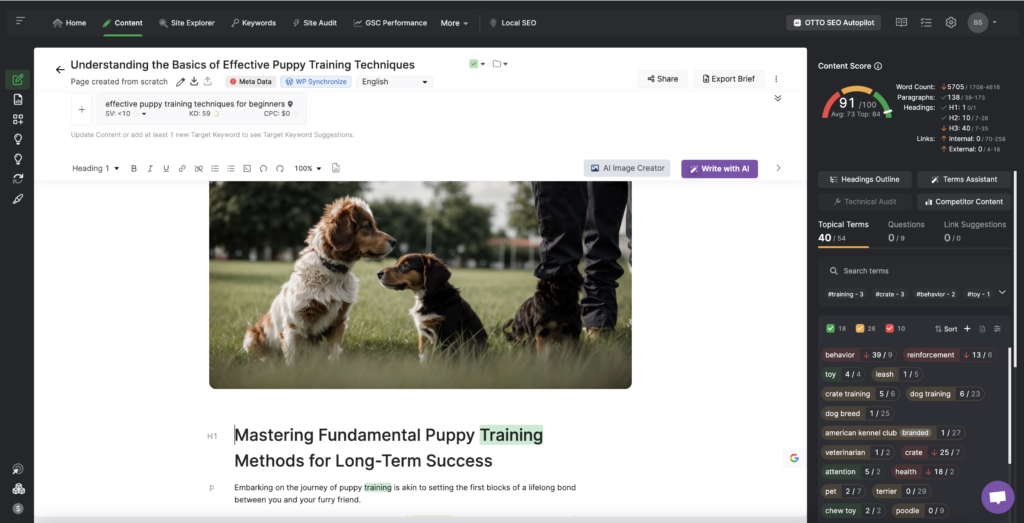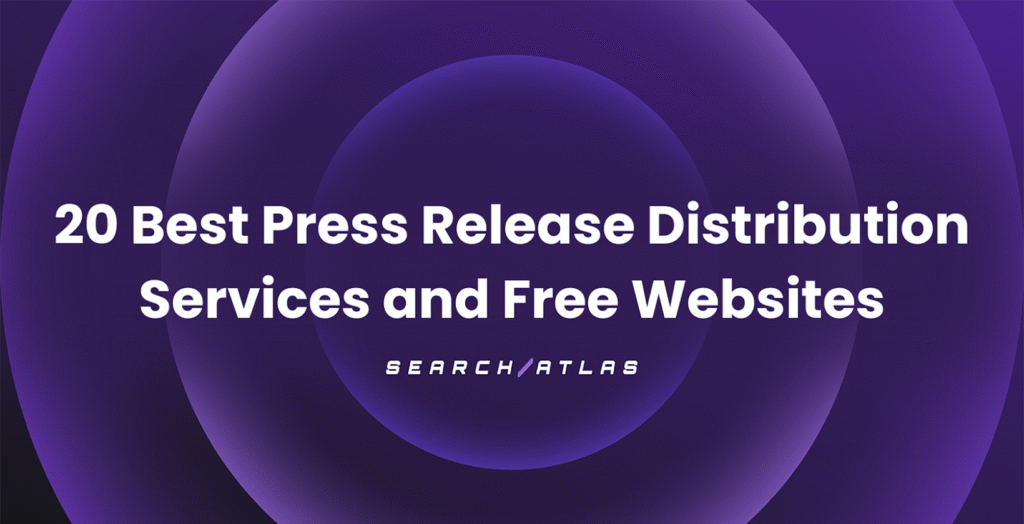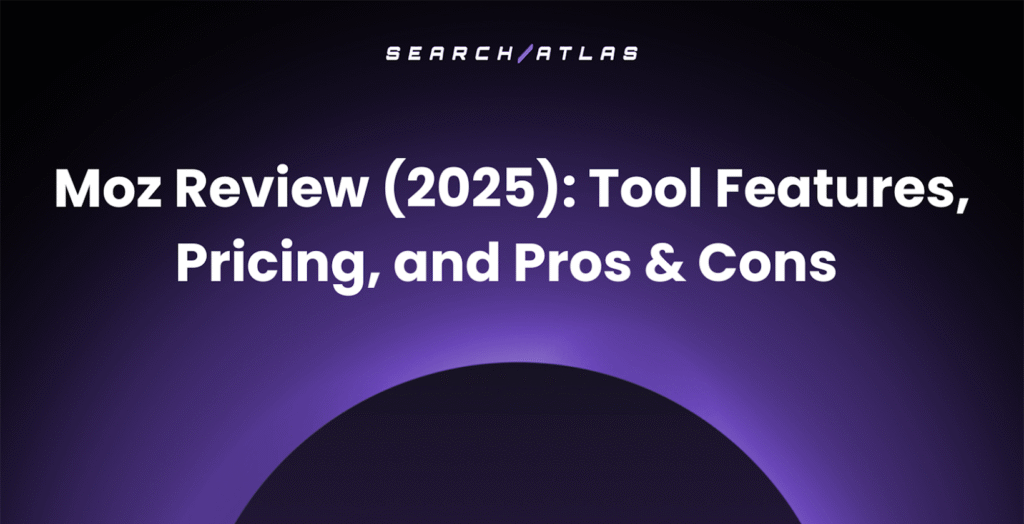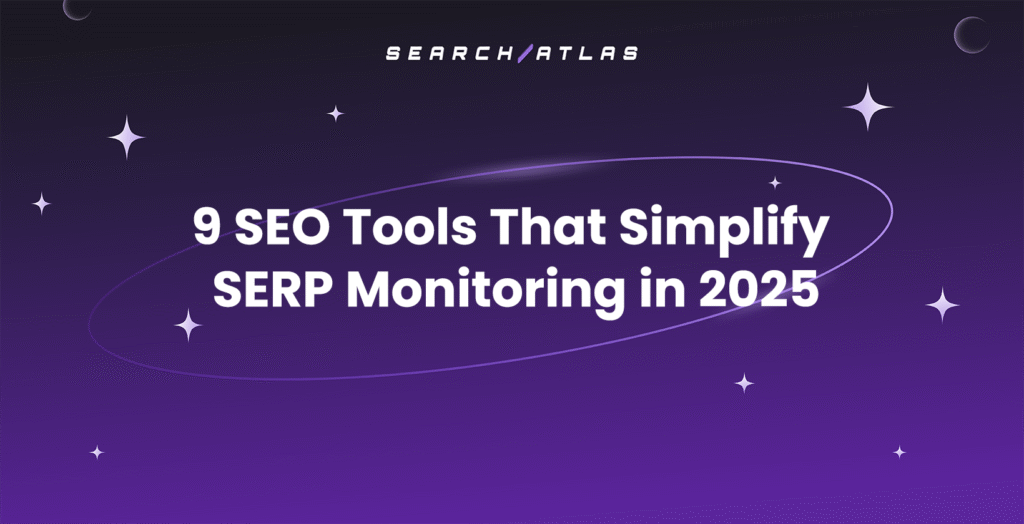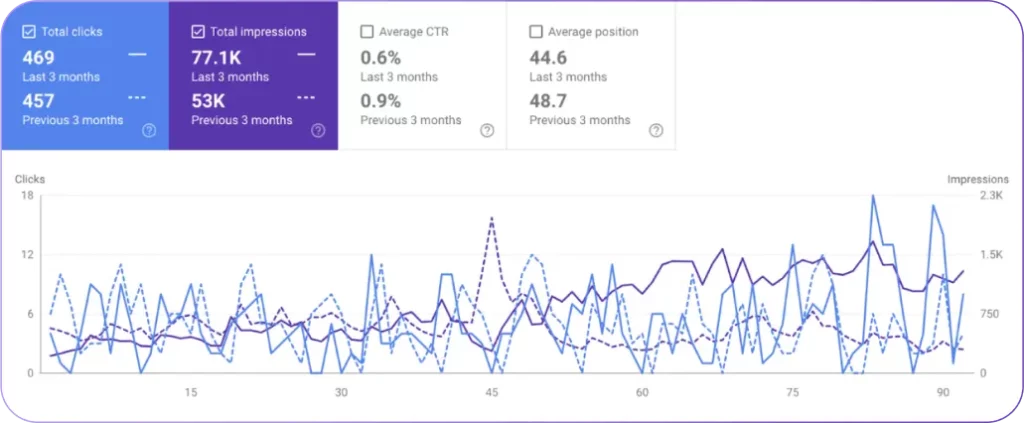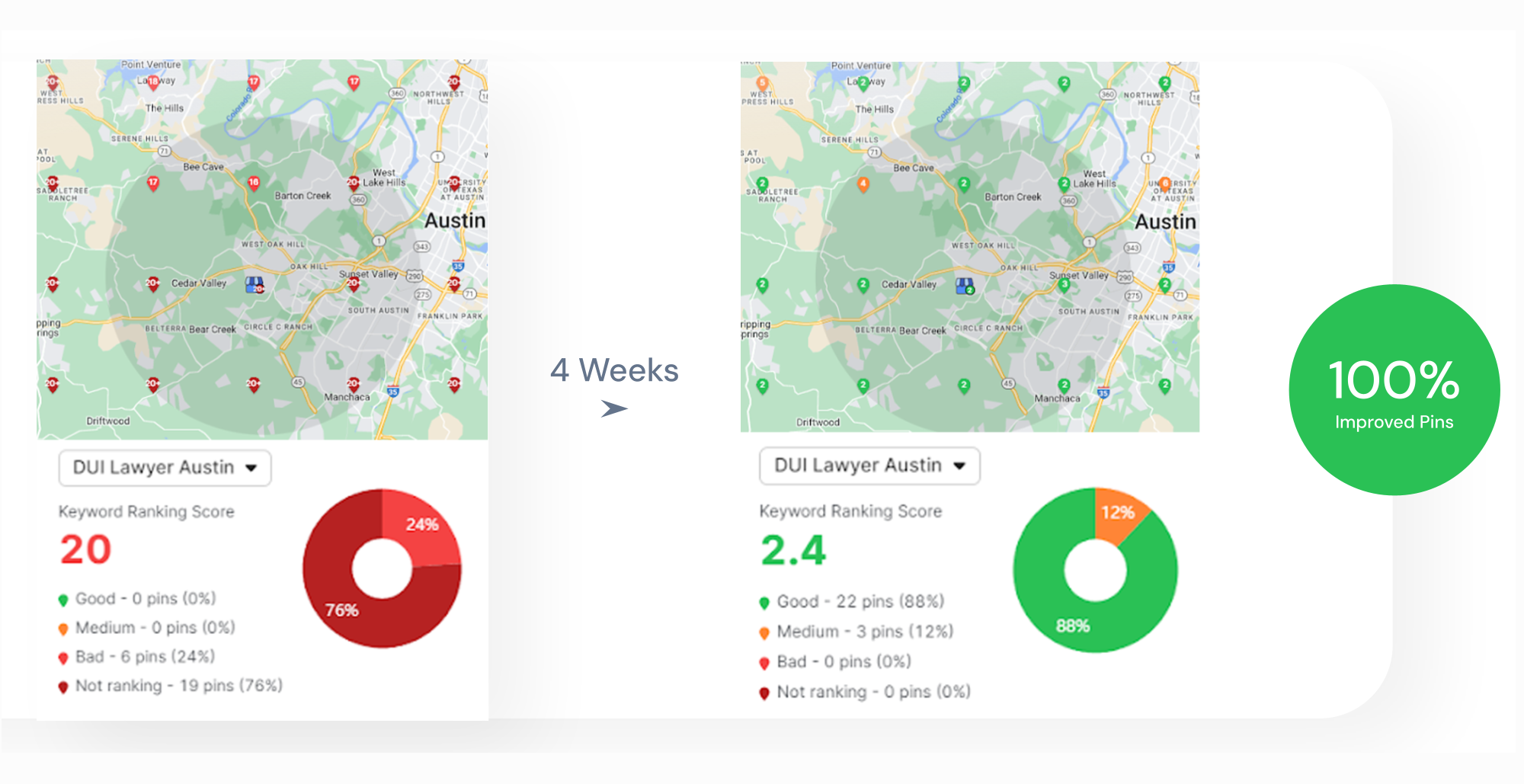Backlink profile analysis is crucial for SEO. Experts analyze backlinks to understand their impact on search rankings. Learning this skill helps site owners and marketers improve SEO.
While it requires advanced knowledge, this guide will make your SEO link-building strategy easy and straightforward.
Although backlink analysis does require some advanced SEO knowledge, this link-building guide will break down the most important factors related to this process, including:
- The definition and purpose of backlink analysis
- The role of backlinks in Google’s ranking algorithm
- Factors to pay attention to during backlink analysis
- How to perform backlink analysis using Search Atlas SEO software
- What to do after a backlink profile analysis is complete
What is Backlink Analysis?
Backlink analysis is key in SEO, involving the examination of backlinks to determine their impact on a website’s search rankings. Backlinks are hyperlinks from other sites pointing to your site, and Google uses them to assess content and authority.
The collection of these links forms a website’s backlink profile, influencing its ranking. Analyzing this profile provides valuable insights for SEO strategies.
Each website has a unique backlink profile, and the quantity and quality of those links play a major role in whether or not Google will rank web pages.
Why Conduct Backlink Profile Analysis?
One important aspect of an SEO link-building strategy is to find backlinks to a site, as backlinks are crucial for ranking.
Along with keyword research, backlink analysis is an essential step in the SEO research phase. To improve a website’s search engine rankings, marketers and site owners should analyze their backlinks and those of competitors. By doing this, SEOs can:
- See backlinks of a website.
- Understand the quality and quantity of backlinks pointing to a site.
- See the common anchor texts being used when linking to web pages.
- Identify where competitors are earning their backlinks.
- Discover whether or not a website would benefit from link building.
If you are wondering, “How can I check backlinks for my website?” then by signing up for Search Atlas for free, you will have access to their comprehensive SEO services, check backlinks of a site, as well as have access to a comprehensive link building guide.
Backlinks and Google’s Ranking Algorithm
Since SEO’s early days, finding backlinks for a site has been crucial in Google’s ranking algorithm, indicating a website’s trustworthiness. Google’s founders saw backlinks as akin to academic citations, signaling valuable and reliable information.
However, unethical practices like buying and selling low-quality backlinks led Google to refine its algorithm over the past twenty years. Now, backlink profile analysis focuses on determining whether backlinks convey the quality signals Google values for ranking pages.
Factors to Pay Attention to When Conducting Link Profile Analysis
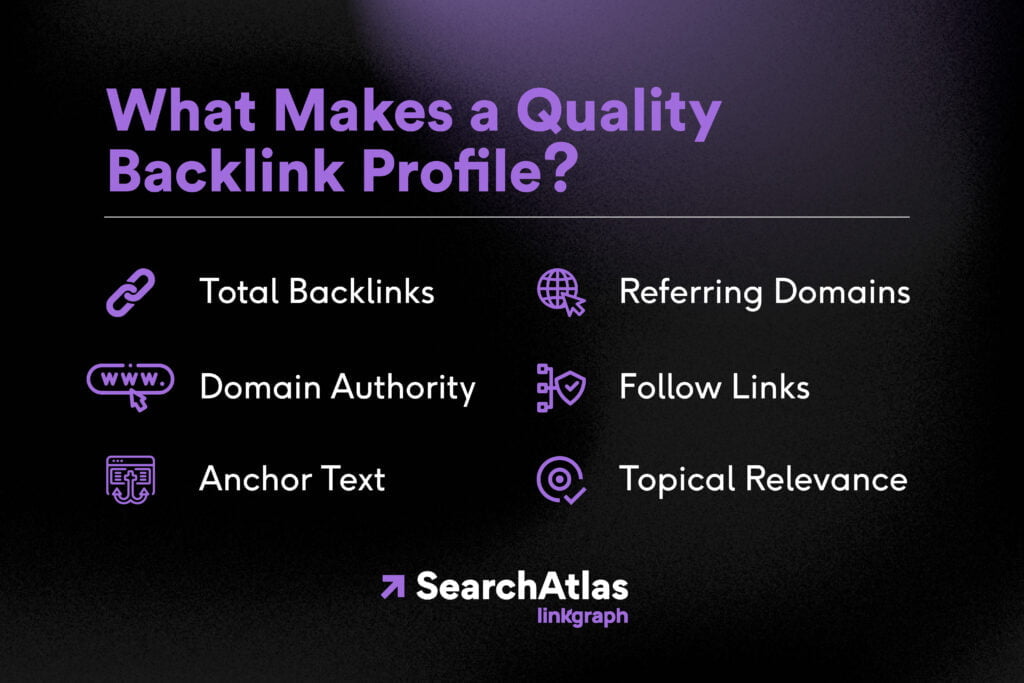
When using the Search Atlas backlink analyzer to examine your website’s backlinks or competitors, these are the factors that you should pay attention to. Each serves as a quality indicator that can help you evaluate the overall health of a backlink profile.
Total Number of Links
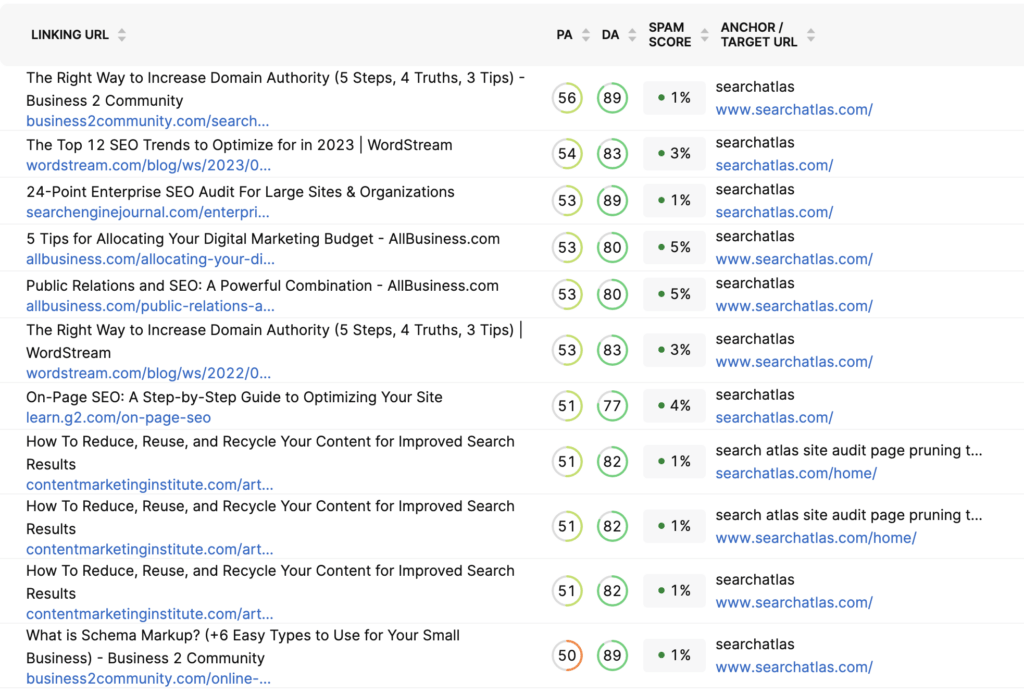
As a general rule, websites with more good backlinks generally rank higher, as numerous backlinks indicate the page’s value. However, quality trumps quantity.
Backlinks from low-quality sites can harm search performance. While high-quality backlinks boost rankings, it’s not solely about the numbers.
Google will also consider the quality of backlinks, which can be measured by the following factors. Another relevant practice is conducting keyword research for each backlink. The term or keyword each backlink is connected to is highly relevant and should be placed naturally in the text, instead of looking like a forced link.
Unique Referring Domains
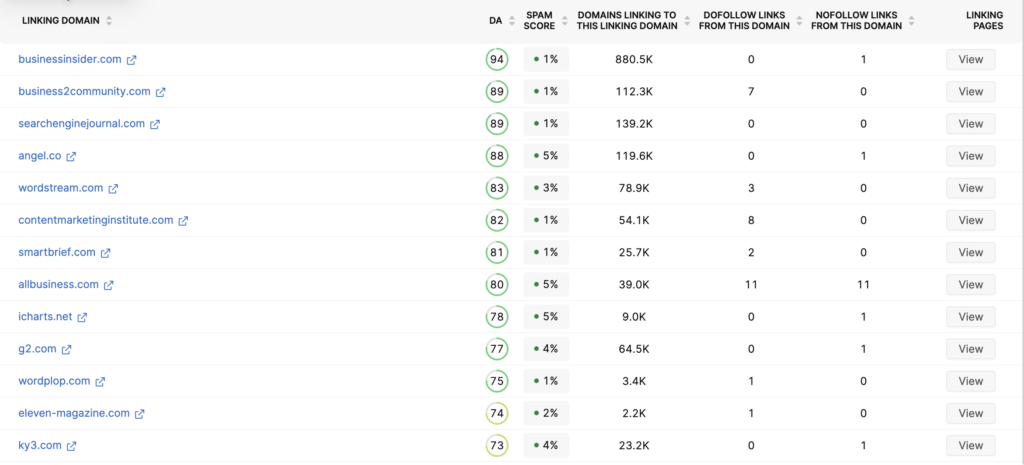
Every website that links to yours is considered a referring domain because that website can send your website referring traffic.
Google wants to rank websites that have many unique referring domains. If multiple websites are linking to yours, it shows Google that your website is reputable and well-trusted by many in your industry.
A long list of unique referring domains in your backlink profile can increase your overall ranking potential, as Google will see your website as more trustworthy.
Domain Authority of Referring Domains
In addition to unique referring domains, consider their Domain Authority (DA) or Domain Rating (DR). While not direct ranking factors, these metrics indicate a website’s link equity.
Websites with higher DA scores typically have more backlinks and thus more link equity. Although site owners can’t control who links to them, outreach should target reputable, high-quality websites.
Pay attention to the Domain Authority of your referring domains and your competitors’ referring domains. You can check the DA of any website using the Domain Authority checker in the Search Atlas dashboard.
Dofollow vs. Nofollow
There are two types of backlinks: dofollow and nofollow. Nofollow links have an attribute that prevents crawlers from following them, thus not passing “link juice” to your site. Dofollow links, without this attribute, allow crawlers to follow and are more valuable for SEO.
While nofollow links don’t influence Google’s ranking algorithm, they can still drive traffic and potentially lead to future natural backlinks.
Anchor Text
Although site owners can’t control the anchor text others use, Google views it as a quality indicator. Anchor text, the clickable text of a hyperlink, should reflect the content of the linked page.
Pay attention to the anchor text used by others, as Google uses it to gauge content relevance and ranking. If anchor text doesn’t match the page content, it can confuse Google and potentially harm the backlink profile of a site.
The best strategy to ensure you have good anchor text is performing keyword research to check if the anchor text is relevant to the topic it’s being linked to. You can also use the data you just collected to improve your overall SEO strategy.
A healthy backlink profile will have a diverse set of anchor texts, including branded, partial match, generic, and naked. For more details on the different types of anchor texts, read this detailed guide on anchor text diversity.
Topical Relevance
A healthy backlink profile includes links from domains with similar topical relevance. Backlinks from related websites indicate trust within your industry to Google.
Conversely, irrelevant backlinks can appear unethical. For instance, a law firm with many good backlinks from food blogs looks unnatural. Aim for high-quality, relevant backlinks to demonstrate that your website is trusted by top sites in your field.
How to Perform Backlink Analysis Using Search Atlas
There are two primary ways to perform backlink analysis in your Search Atlas dashboard. The first will help you find backlinks for a site and understand the strengths and weaknesses of your own backlink profile. The second will help you compare your backlink profile against competitors.
1. Analyze a Website’s Backlink Profile Using the Backlink Analyzer
Navigate to the “Backlink Research” feature in the dashboard and enter the homepage URL of the website that you want to analyze. Then, press “Analyze.”
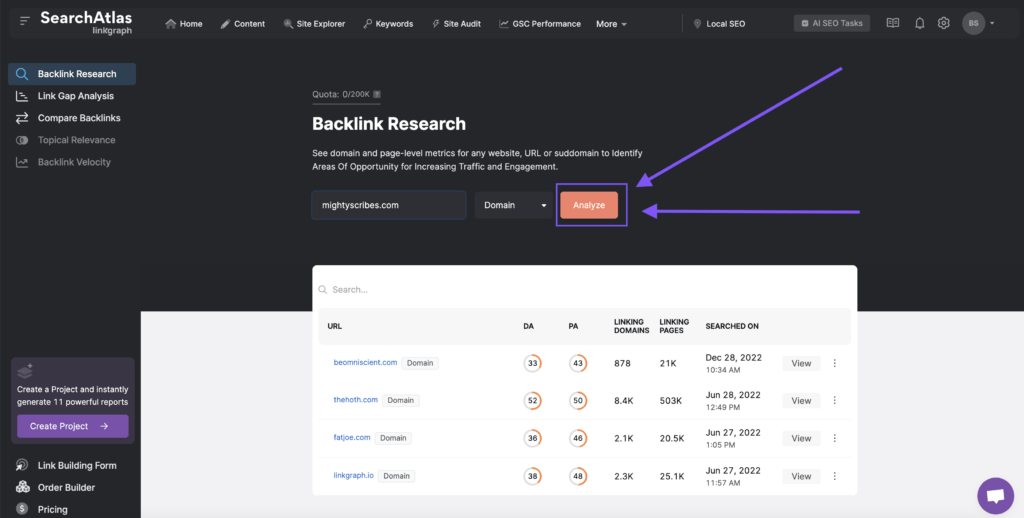
After the report is generated, it will be added to your list of reports at the top of the table. Click “View” to see the details of the report.
The report’s first page will provide you with a visual overview of the website’s backlink profile and how it has changed over time.
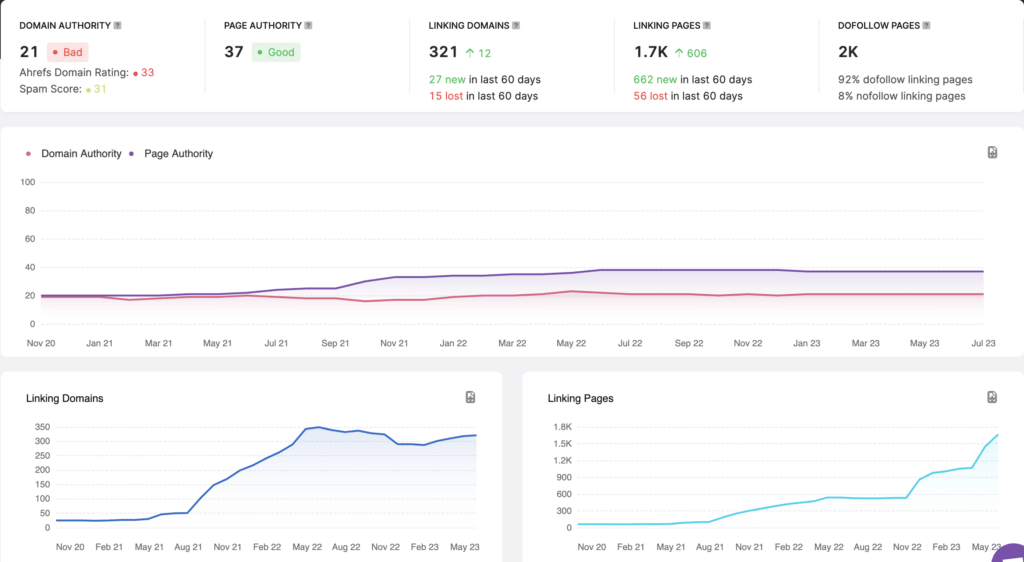
You will want to see upward trends in all of the above charts – as your DA, PA, and total linking domains and linking pages should naturally increase over time. Any downward or static trends may signal that your website is in need of a link-building campaign.
There will also be six other tabs that you can navigate to in the report including:
Linking Domains
A complete list of all of the referring domains in your backlink profile and the total referring domains over time.
The table will also display the referring domain’s Domain Authority, spam scores, and whether the links are dofollow or nofollow.
A healthy, active website will show an upward trend in referring domains over time.
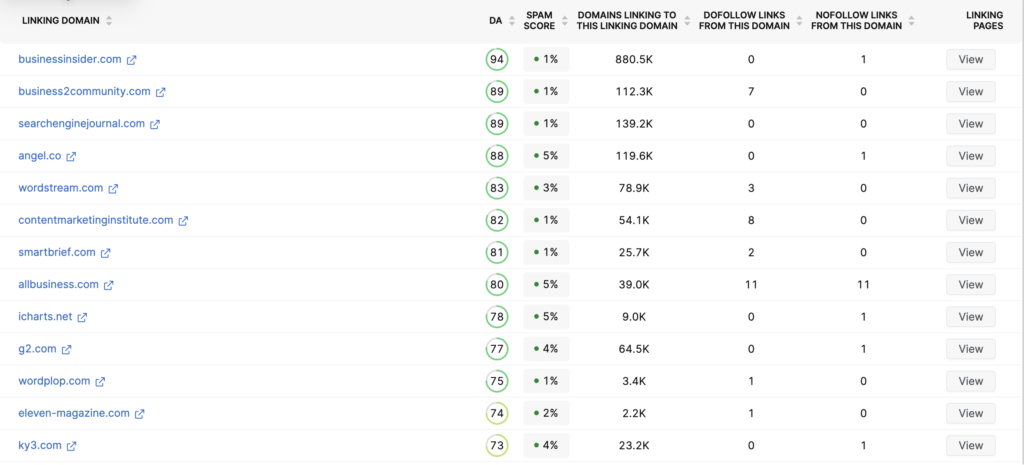
Linking Pages
A complete list of all of the web pages that include backlinks to your website and the total linking pages over time. The table will also display individual page URLs and Page Authority scores of the linking pages.
Like linking domains, a healthy backlink profile will have an upward trend of linking pages.
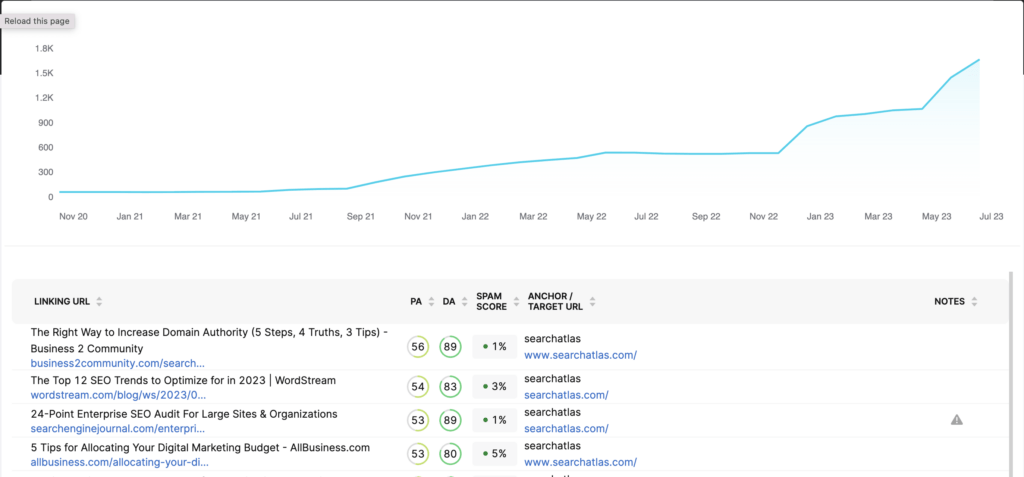
New/Lost Domains
A bar chart showing new or lost referring domains over time.
Referring domains can get lost when websites are migrated or webmasters remove links. In general, you will want to see more green trends than red trends.
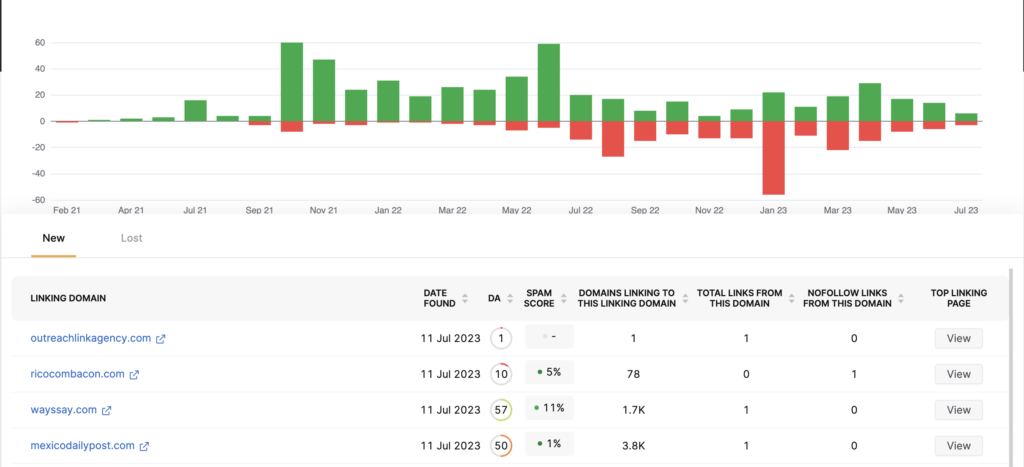
New/Lost Pages
A bar chart showing the total new or lost linking pages over time. It’s normal to lose backlinks, as web pages can be moved, updated, or deleted.
Similarly to New/Lost Domains, you want to see more green trends than red trends.
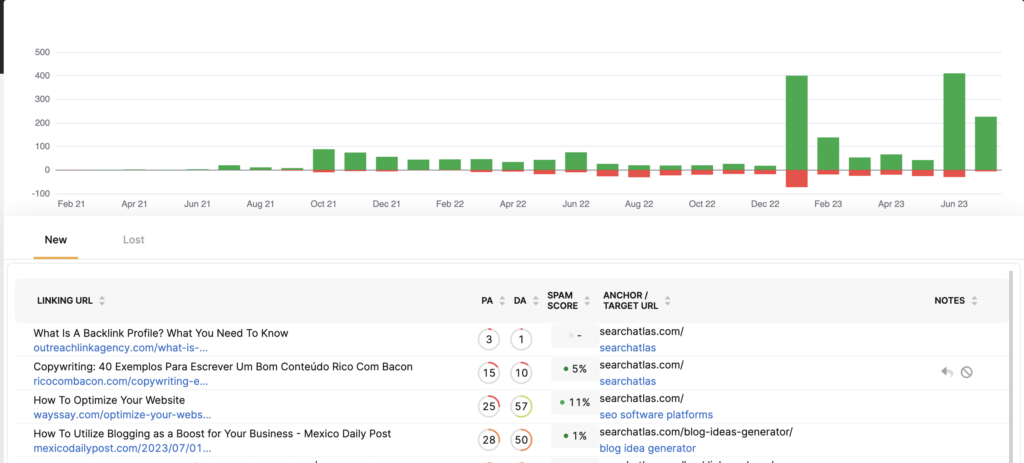
Top Pages
A table showing the top pages on the website, or those with the strongest backlink signals. The table also includes Page Authority scores, status code, total linking domains, and total linking pages. It is most common for the homepage of a website to have the most backlinks.
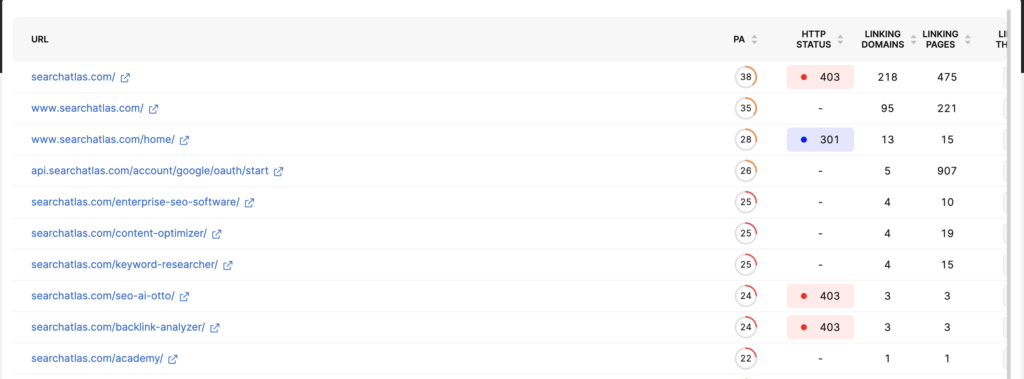
Anchor Text
A bar chart showing you the distribution of anchor texts in your backlink profile. Most likely, the majority of your anchor text will be branded.
However, you will also want to see anchors that have topical relevance to the keywords that you want your pages to rank for in organic search.
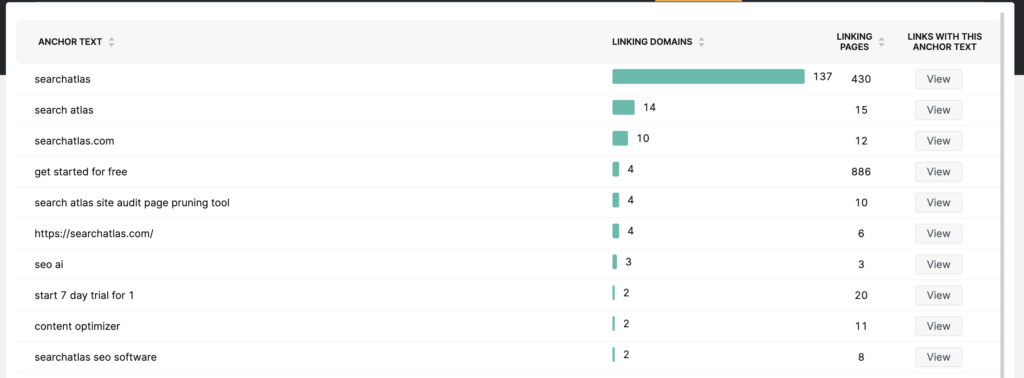
Spam Links
A bar chart showing the number of links on the website that may be from spammy or low-quality websites.
A high distribution of spammy links signals a website that may have been impacted by low-quality or unethical link-building practices.
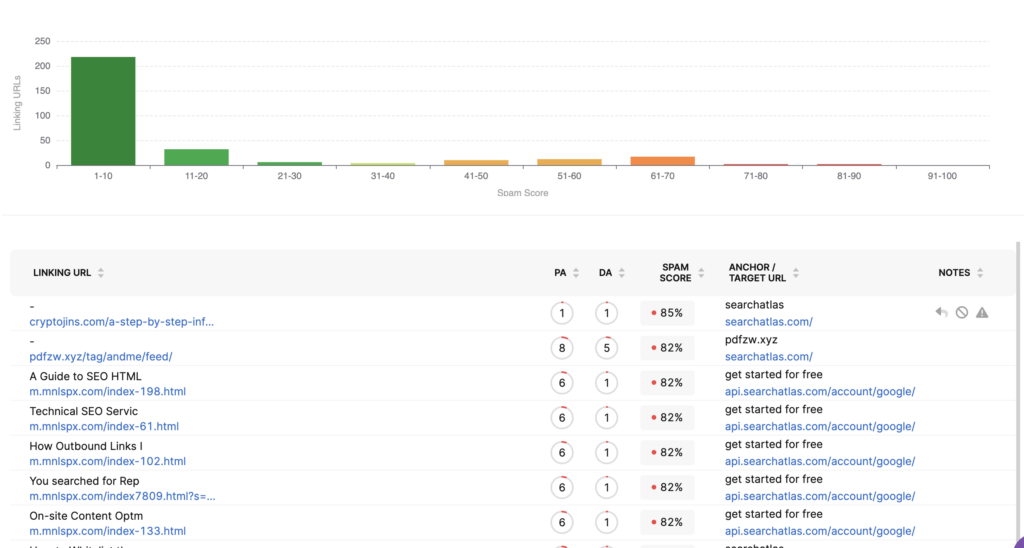
Altogether, these tabs allow you to examine each of the major factors that impact backlink profile health.
Navigate between the tabs to gain all of the information gathered by the software. Then, leverage that information in your SEO strategy.
2. Compare a Website’s Backlink Profile Against Competitors
To compare a website’s backlink profile against competitors, navigate to the “Compare Backlinks” feature in the Search Atlas dashboard.
Enter the homepage URLs of 2-5 competing websites and then press “Analyze Links.”
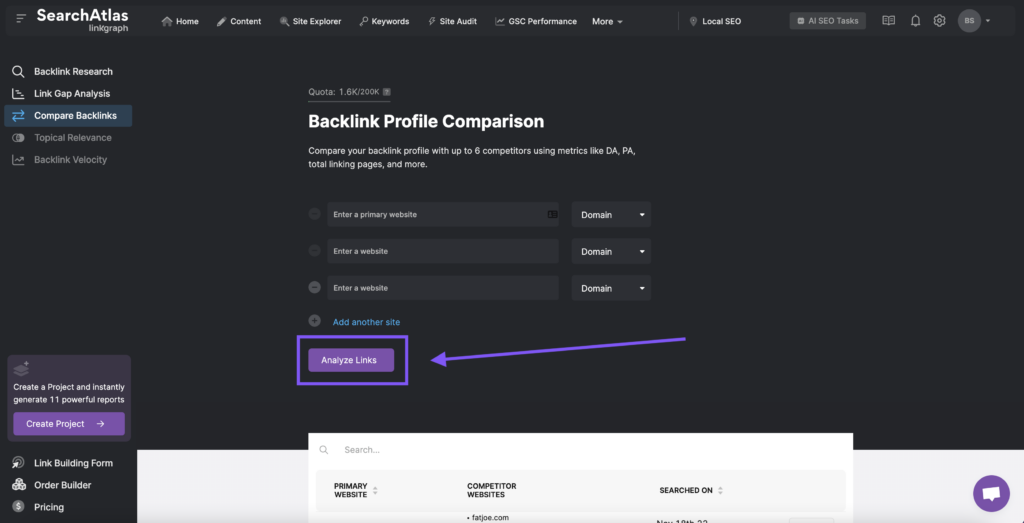
After the backlink comparison report is generated, it will be added to your list of reports at the top of the table. Click “View” to see the details of the report.
This report will chart the major factors impacting your backlink profile alongside your competitors, including Domain Authority, Page Authority, linking domains, and linking pages.
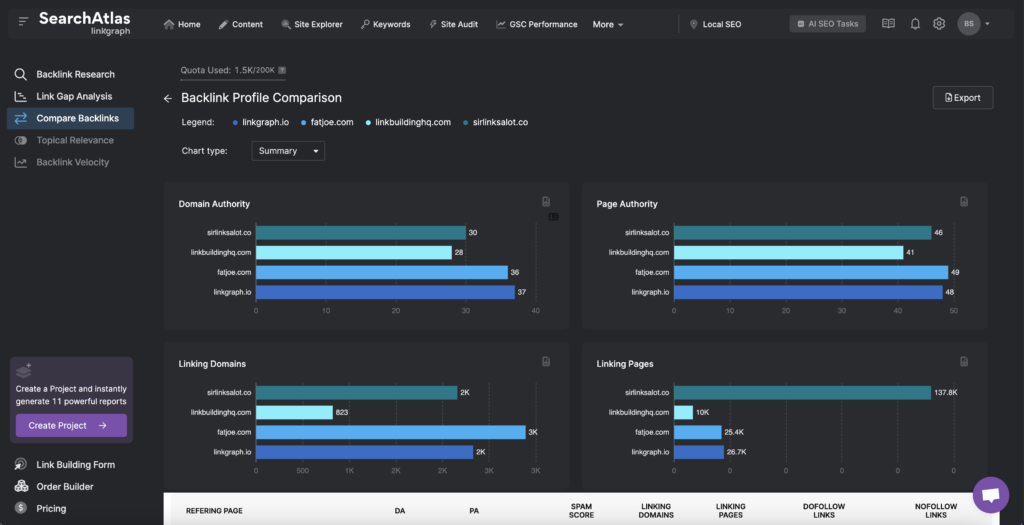
If all of your competitors have stronger signals in these areas, Google is more likely to rank pages from their domains, even if your content is high-quality.
That is a sign that your website needs to start doing SEO link building outreach.
What to Do After Backlink Analysis: Possible Next Steps
All of this backlink profile information may feel overwhelming to those newer to backlink analysis. However, the backlink data in these reports provide very valuable insights that you can utilize to improve your SEO.
Identify Any Missing or Low-Quality Content on your Website
If your competitors have more backlinks, it might be because they have more content. High-quality content attracts more links and can fuel public relations, social media, and digital PR efforts, leading to more backlinks.
Use the competitor research tool in Search Atlas to find backlinks for site-ranking content and pages with strong Page Authority metrics on their websites. We highly recommend harnessing other SEO services.
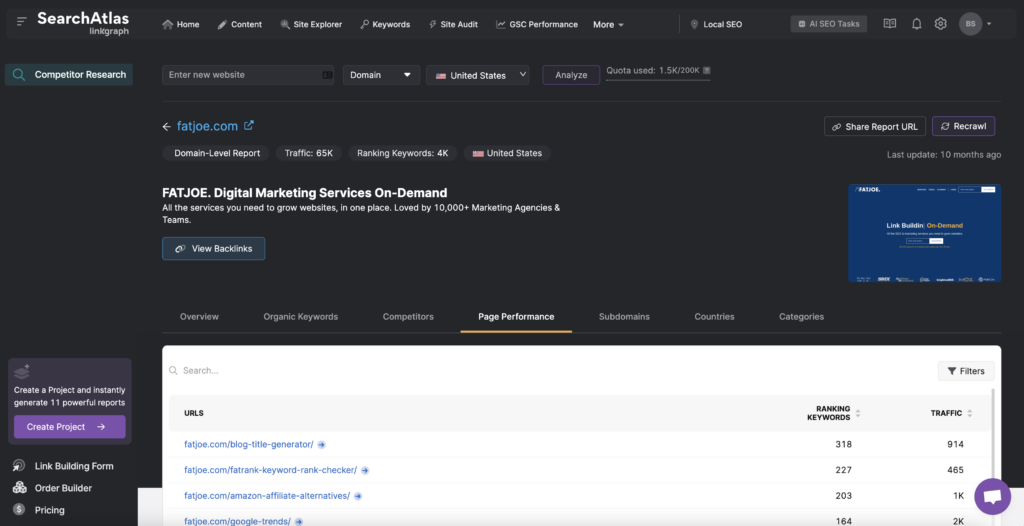
You may want to consider adding similar content to your own website to increase your chances of earning high-quality backlinks.
Create a List of Outreach Targets for SEO Link Building
Competitor backlink analysis helps identify who links to your competitors and which pages they link to. To improve organic search performance, aim to secure more backlinks than your competitors.
Start by compiling a list of your competitors’ referring domains and engage in targeted link building, public relations, and outreach efforts. Utilize the Link Gap Analysis tool in your Search Atlas dashboard to pinpoint potential outreach opportunities effectively.
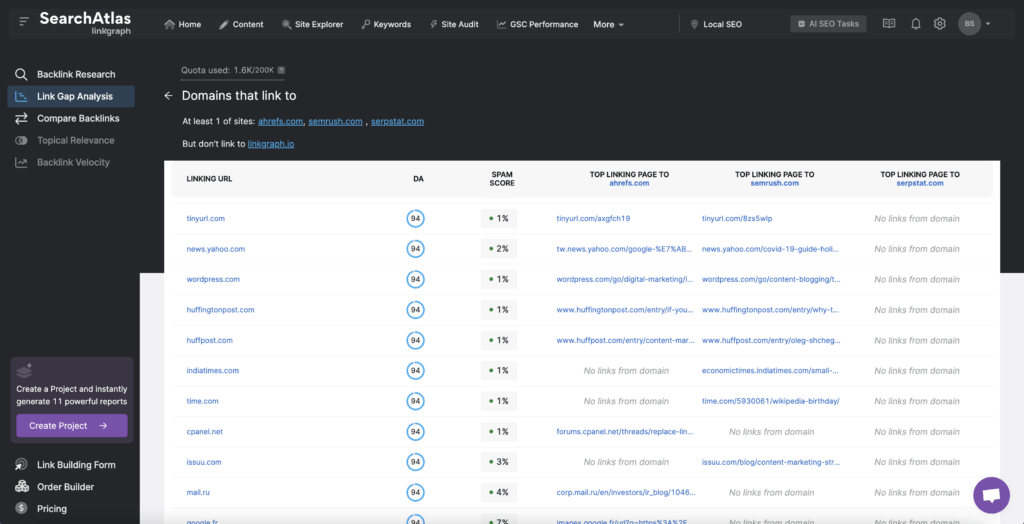
If there are websites linking to multiple of your competitors’ domains, it’s likely that those websites may also be interested in linking to your content.
Disavow any Spammy or Toxic Backlinks
Don’t forget to find broken website links. If the backlink analysis process reveals that your backlink profile is tainted with toxic links or spammy referring domains, you may want to consider leveraging Google’s disavow tool.
Google has improved its ability to ignore low-quality links pointing to websites, as these can harm search rankings. The disavow tool enables webmasters to request Google to disregard such links, but using the disavow tool requires advanced SEO expertise.
It’s advisable to collaborate with experienced technical SEO professionals when utilizing the disavow tool, as incorrectly disavowing good backlinks could inadvertently harm your organic ranking potential rather than improve it.
We also highly recommend finding broken website links and completely removing them, as this is seen as a bad practice that can hurt your SEO.
Invest in a Link Building Campaign
If your backlink analysis shows few links, poor-quality domains, or limited anchor text diversity, consider a link-building campaign.
Building links through original content and manual outreach is a powerful SEO strategy. Quality backlinks not only drive traffic but also boost Domain Authority, enhancing your site’s ranking potential. Ensure you collaborate only with reputable link builders who follow Google’s guidelines.
Agencies that specialize in link building, like LinkGraph, can help ensure the links you earn meet Google’s quality standards.
Ready to Analyze Backlinks?
Remember, improving your backlink signals is one of the fastest and surest ways to increase your organic visibility. Plus, regularly checking in on your backlink profile helps ensure that you don’t lose any momentum with your off-site SEO strategy.
If you want to start analyzing your backlink profile for organic ranking potential, start a free trial of Search Atlas. You will gain access to all of the back link data, the features listed in this article, and high-quality SEO services!


